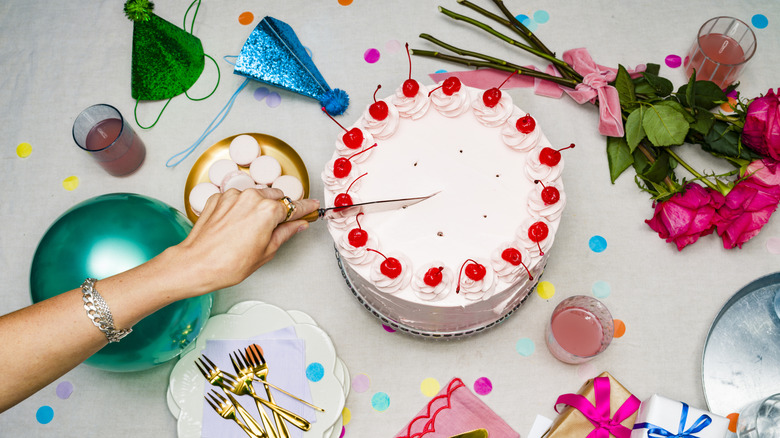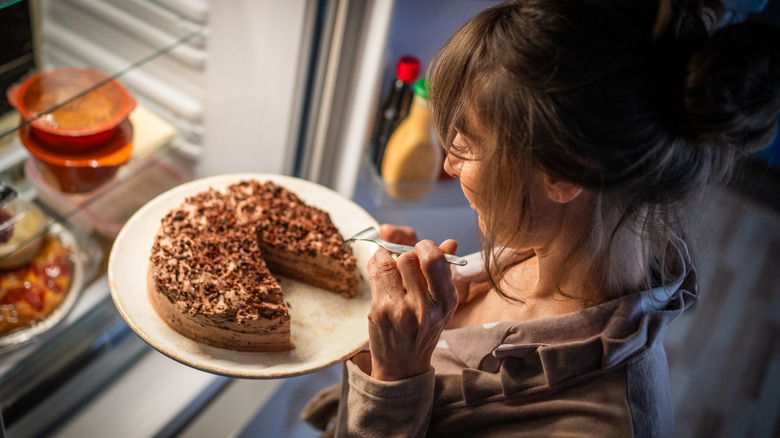Does Cake Ever Have To Be Refrigerated?
We may receive a commission on purchases made from links.
To chill or not to chill? That is the question. We are, of course, talking about cake. Folks tend to have passionate feelings about the experience of eating cold cake versus cake served at room temperature, and we definitely aren't here to invalidate personal preferences. The fact is, however, that sometimes cake has to be refrigerated for food safety reasons. While your garden variety pink velvet cake (which is different from its more famous red sister) might be just fine in a covered container on the kitchen counter for a day or so, certain cakes need cooling.
Cakes with fresh fruit (like Whole Foods' famous Berry Chantilly cake) or a high amount of dairy, such as cheesecake, need to stay in the fridge when not being eaten. This is a matter of protecting yourself and all your loved ones from getting sick, as well as safeguarding the structural integrity of the desert. Similarly, any cakes containing curd or custard need the fridge. Baking a cake a couple of day or more in advance? Yup — you should refrigerate those, too. There are actually some benefits to chilling cake, as putting cake in the fridge helps you cut perfect slices, for instance. However, it's not as simple as putting a bare cake on a fridge shelf. Storing cakes in the fridge the right way requires a bit of know-how.
How to store cake in the fridge for the best texture and flavor
Before you chill cake, your best move is to slice it. That may sound counterintuitive, but cutting serving-sized portions and enrobing them in plastic wrap will not only keep the cake tender but protect the icing from sucking up any unwanted smells or flavors from its neighbors in the fridge. Make sure that the slices are completely enveloped in the plastic, and not just covered on top! Write the date on the wrapping or a bit of tape affixed to the wrap to make sure that it is consumed within a few days. If your cake is frosted, stick it in the fridge uncovered for about a quarter-hour to set the icing, and then go ahead and wrap it up. If you baked the cake yourself, it's critical to let the confection cool completely to room temperature before chilling. That way, steam won't be trapped in the sponge. This can lead to a wonky texture, or possibly even dangerous bacteria growing inside.
If you must keep a whole cake intact, your best move is to store the cake in a dedicated, sealing cake carrier like this Top Shelf Elements variety that will keep air from seeping in and ruining your cake. A whole, frosted cake should fare just fine for a day in the fridge. Just keep in mind that you should let it sit at room temperature for an hour or two before you serve — unless you're one of those chilled cake aficionados, of course.

